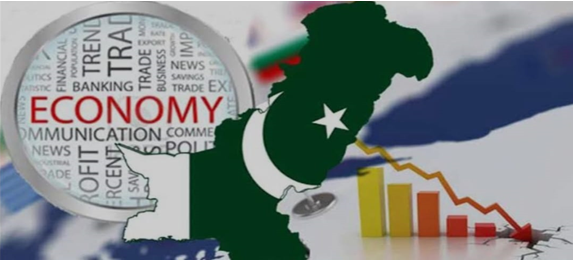آئی این پی ویلتھ پی کے
Ayesha Saba
Pakistan’s economy has shown renewed signs of stability as key macroeconomic indicators improved during the first four months of the current fiscal year, with inflation easing, industrial output recovering, and tax revenues registering strong growth. According to the Monthly Development Update for November 2025 issued by the Ministry of Planning, Development and Special Initiatives, these trends reflect the impact of administrative measures, fiscal discipline, and targeted development initiatives undertaken by the government to steer the economy toward sustained recovery.
The report highlights a notable decline in inflation, which stood at 4.7 percent during July to October FY2025-26, compared to 8.7 percent in the same period last year. Monthly inflation initially exhibited a downward trajectory in July and August, indicating early price stability, before rising to 6.2 percent in October due to flood-related supply disruptions. The government attributes this moderation in price pressures to effective administrative actions and relief measures that supported market stability during the period under review.
Large Scale Manufacturing (LSM), which had been under stress for two consecutive years, has entered a recovery phase. Industrial output grew by 4.4 percent during July and August, marking a significant turnaround from the 0.2 percent contraction witnessed in the same two months of the previous fiscal year. The increase in LSM activity has boosted demand for raw materials and fuel, signaling renewed momentum in industrial operations and contributing to overall economic resilience.
Tax collection showed a strong performance as the Federal Board of Revenue (FBR) collected Rs3,834.9 billion during July to October FY2025-26, an increase of 11.4 percent from Rs3,442.7 billion collected in the corresponding period last year. In October alone, FBR collected Rs950.6 billion, reflecting growth of 8.1 percent compared to the same month in FY2024-25. The report notes that this upward trajectory demonstrates the effectiveness of revenue mobilization efforts and improved fiscal management.
External sector indicators presented a mixed picture. Exports, which were initially on an upward trajectory with a 0.7 percent increase during July and August, declined by 4 percent over July to October due to disruptions caused by recent floods that affected key export sectors. Goods exports stood at $10.4 billion compared to $10.9 billion last year. However, services exports grew significantly, recording a 14.7 percent increase during July to September.
The growth in services included a 20.5 percent rise in IT exports, which reached $1.1 billion during the period. Imports rose to $23 billion from $20 billion last year, marking a 15.1 percent increase driven by higher industrial activity, increased imports of capital goods, and the impact of the government’s trade liberalization measures. As a result, the goods trade deficit widened to $12.6 billion, compared to $9.1 billion during the same period of FY2024-25. The current account deficit for July to September stood at $0.6 billion, slightly higher than the $0.5 billion recorded last year.
Remittances continued to play a strong role in supporting the external account, rising by 9.3 percent to reach $13 billion during July to October FY2025-26, compared to $11.9 billion in the same months of the preceding fiscal year. According to the report, inflows increased as overseas Pakistanis continued to send additional support to families facing inflationary and flood-related hardships.
The report states that despite fiscal pressures and the challenges arising from post-flood recovery, the government remains focused on promoting inclusive and resilient growth. Strategic investments across infrastructure, agriculture, clean energy, and digital transformation, paired with stronger coordination with development partners, are expected to support economic confidence in the coming months.
The Planning Ministry notes that easing inflationary trends, improved fiscal management, and enhanced monitoring and evaluation systems are collectively contributing to a more stable macroeconomic environment. The document concludes that Pakistan is transitioning from recovery toward growth, with improved macroeconomic signals laying the foundation for more balanced and sustainable development.

Credit: INP-WealthPk



